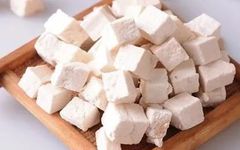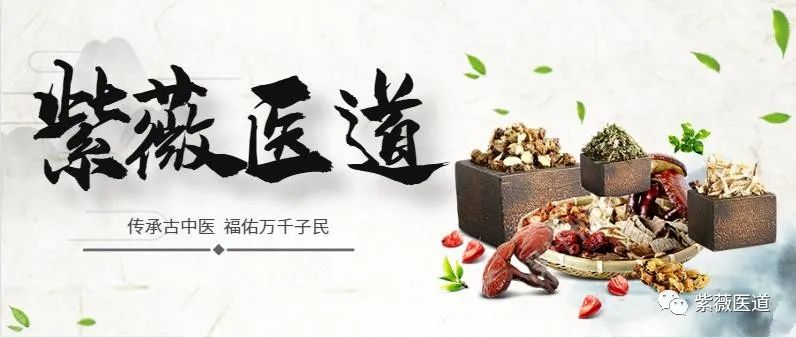
In Traditional Chinese Medicine (TCM), Poria Cocos (Fu Ling) is considered sweet and bland in flavor, neutral in nature, and is associated with the Heart, Lung, Spleen, and Kidney meridians. It is known for its ability to promote urination, eliminate dampness, strengthen the Spleen, and calm the mind. It is suitable for conditions such as edema, difficulty urinating, phlegm retention, dizziness, palpitations, poor appetite, loose stools, anxiety, and insomnia. Poria is characterized by its gentle properties, which can tonify the Spleen and eliminate dampness without being harsh, and it has no significant toxic side effects, making it suitable for long-term use. Below are several dietary therapy recipes using Poria.
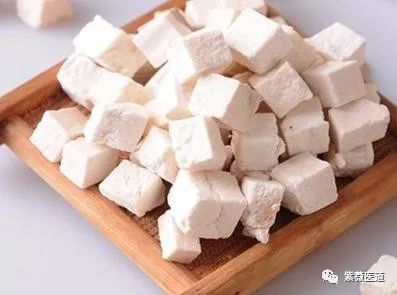
Rheumatic Joint Pain
Combine 15 grams of Poria with 60 grams of Job’s Tears (Yi Yi Ren), grind into a fine powder, add an appropriate amount of water, and cook until done.
Palpitations
Mix equal parts of Poria, Lotus Seeds (Lian Zi), and Ophiopogon (Mai Dong), grind into a powder, add an appropriate amount of sugar and osmanthus, mix well, and steam with water to make a cake.
Chronic Enteritis
Combine 50 grams of Poria powder, 50 grams of Chinese Yam (Shan Yao) powder, 50 grams of Lotus Seed powder, 50 grams of Euryale Seed (Qian Shi) powder, 300 grams of flour, and an appropriate amount of sugar and honey. Mix well, add water to form a dough, and bake in the oven until cooked.
Skin Whitening
Combine 30 grams of Almond powder, 10 grams of Poria powder, 10 grams of Lotus Seed, and an appropriate amount of flour. Grind the herbs into a fine powder, mix with flour, add warm water to adjust the consistency, and apply evenly to the face. After 20-30 minutes, rinse with clean water.
Chronic Diarrhea in Children due to Spleen Deficiency
Combine 30 grams of Poria powder, 60 grams of Japonica Rice (Jing Mi), and 5 dates (Da Zao). Remove the pits from the dates, soak them with the rice, and cook with water. Add Poria powder when nearly done, and cook until finished. Take 2-3 times a day.
Ancient texts refer to Poria as a “divine medicine for all seasons” due to its wide-ranging effects and compatibility with various herbs, effective against ailments regardless of season or type.
Poria is one of the Four Gentlemen in TCM and is frequently used in formulas in the “Shang Han Lun” and “Jin Gui Yao Lue”.
Master Zhang Zhiyuan, inheriting the wisdom of his predecessors, has clinically applied Poria by understanding its effects of “promoting urination, eliminating dampness, and calming the mind”. He has further expanded its therapeutic applications by skillfully combining Poria with other herbs or formulas.
Master Zhang has effectively utilized Poria in his clinical practice for over 70 years.
Herbal Combinations
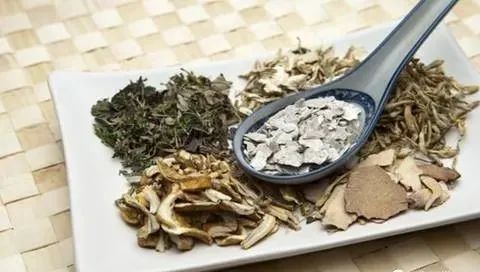
Master Zhang believes that Poria is sweet and neutral, and its effects are gradual, not immediate. It is best combined with other herbs or formulas, and can be used in large doses.
In clinical practice, Master Zhang often combines Poria with Alisma (Ze Xie) to drain heat and promote urination, achieving a balance of tonification and drainage;
Poria with Licorice (Gan Cao) to calm the mind and benefit Qi, allowing for smooth urination and tranquility;
Poria with Gastrodia (Tian Ma) to suppress phlegm and calm wind, alleviating internal wind disturbances.
1.
Poria with Alisma for Heat Drainage and Urination
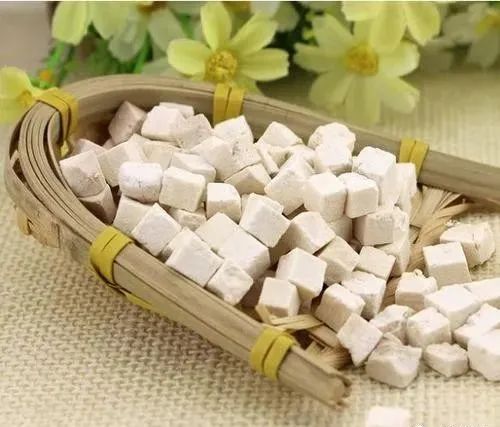
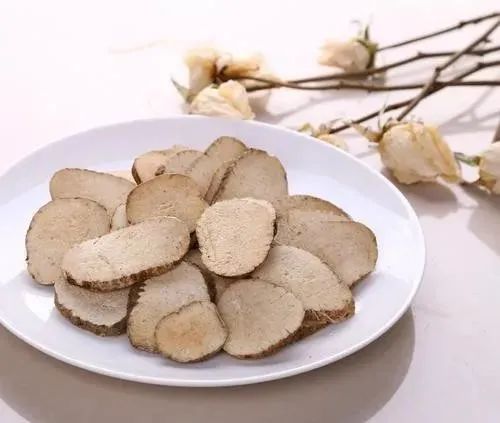
The “Suwen: On the Pulse” states: “The Spleen pulse… if it is weak and scattered, the color is not lustrous, it indicates foot edema, resembling water retention.”
Master Zhang points out that edema is often seen in Spleen Qi deficiency, where the body cannot properly transform and transport fluids, leading to abnormal fluid metabolism and accumulation of dampness. Therefore, treatment should focus on strengthening the Spleen and promoting urination.
In clinical treatment of edema, Master Zhang frequently uses the combination of Poria and Alisma. Both are diuretics, but one is a fungus and the other a tuber, thus their clinical effects differ.
Poria is gentle, tends to tonify deficiency, strengthens the Spleen, benefits Qi, calms the mind, and has diuretic properties, thus possessing both tonifying and draining functions without being harsh or damaging. Alisma, on the other hand, is cold in nature, excels at draining heat, and is characterized by its ability to drain without tonifying, promoting urination without harming Yin. Therefore, many formulas that tonify also incorporate Alisma and Poria.
In cases of Spleen heat and body edema, Master Zhang often combines Poria and Alisma to regulate the water pathways, which can strengthen the Spleen and eliminate dampness while preventing excessive drainage without tonification, thus allowing for the expulsion of pathogens.
2.
Poria with Licorice for Calming the Mind and Benefiting Qi
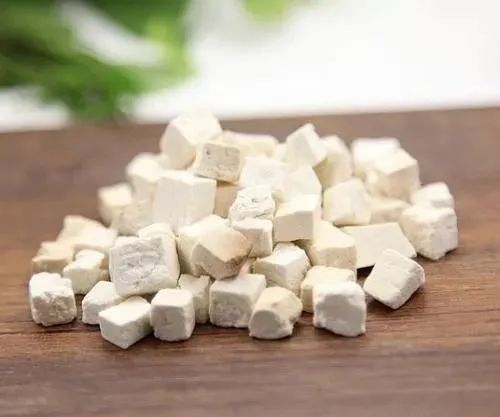
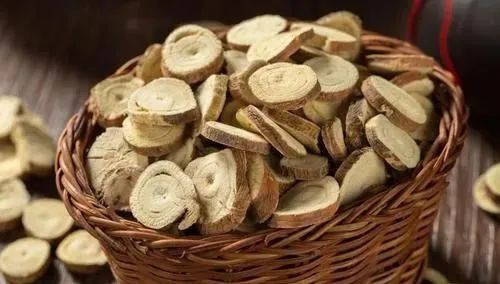
The “Pujifang” states: “Poria and Licorice are sweet, benefiting body fluids and harmonizing the Ying Qi.”
Poria calms the mind and alleviates phlegm and promotes urination;
Licorice tonifies the middle, benefits Qi, and regulates irregular heart rhythms and intermittent pulses.
Master Zhang believes that if the Spleen fails to function properly, phlegm and fluids will not be transformed, leading to disturbances in the heart, causing palpitations. His clinical experience shows that for any palpitations accompanied by anxiety and restlessness, Poria and Licorice can be administered to tonify the middle, benefit Qi, and promote urination, yielding significant results.
Additionally, Master Zhang often adds Longan flesh (Long Yan Rou) to enhance the tonifying and calming effects, naming it the “Calming Palpitations Decoction”;
adding Ginger and Cinnamon Twig forms the Poria and Licorice Decoction, which promotes urination, eliminates dampness, benefits the Spleen and stomach, and calms the mind;
or adding Pinellia (Ban Xia) and Dried Tangerine Peel (Chen Pi) to enhance phlegm-dispelling and dampness-transforming effects, and adding Sour Jujube Seed (Suan Zao Ren), Polygala (Yuan Zhi), and Spatholobus (Ye Jiao Teng) to improve calming effects.
3.
Poria with Gastrodia for Wind Suppression and Phlegm Control
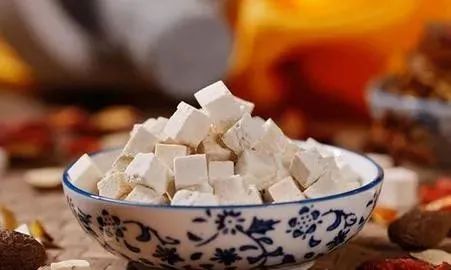
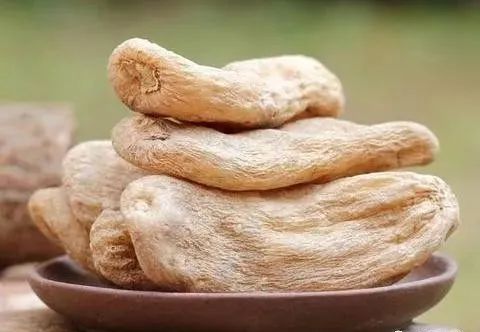
The “Ming Yi Bie Lu” states that Poria “opens the chest, regulates the organ Qi, expels Kidney evil, nourishes Yin, benefits Qi, and protects the spirit.”
The “Rihua Zibencao” states that Gastrodia “assists Yang Qi, nourishes the five labors and seven injuries, opens the blood vessels, and clears the orifices.”
Thus, the combination of the two can nourish Yin and Yang, regulate organ Qi, and open blood vessels.
Gastrodia calms the liver and suppresses wind, stopping spasms and convulsions;
Poria dispels phlegm, promotes urination, and calms the mind. Together, they can suppress phlegm and wind disturbances.
In clinical practice, Master Zhang has used this combination for conditions such as water retention, peripheral neuritis, epilepsy, Meniere’s disease, dizziness, and neurogenic dizziness, often combining Poria with Gastrodia and Pinellia to form the “Three Treatment Decoction” based on the factors of wind, phlegm, and water.
The typical dosage is generally 10-20g of Gastrodia, 20-40g of Poria, and 10-15g of Pinellia.
If dizziness is severe, the dosage of Poria can be increased to 60g, adding 15-20g of Atractylodes (Bai Zhu) and 20-30g of Alisma, yielding significant clinical results.

Clinical Experience with Poria
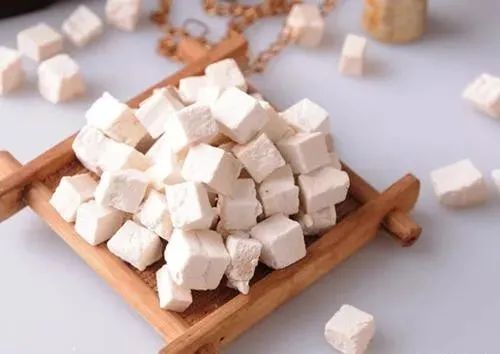
1.
Treatment of Deficiency-Type Edema
Deficiency-type edema is often seen in cases of both Qi and Yang deficiency, where the body lacks the ability to transport fluids, leading to pathological accumulation and resulting in edema or difficulty urinating.
The “Bencao Gangmu” states: “Poria has a bland flavor and promotes urination, its nature ascends, generating body fluids, opening the pores, nourishing the water source, and descending to promote urination.” Thus, Master Zhang considers it to belong to Yang, floating and ascending.
Master Zhang believes that Poria is Yin among Yang, descending and lowering. Therefore, in cases of excessive Yin constitution, Qi and Yang deficiency, and weak fluid transformation, symptoms such as palpitations, shortness of breath, difficulty urinating, cold hands and feet, and pitting edema can all be treated with Poria.
This is commonly seen in conditions such as fluid metabolism disorders, malnutrition, protein deficiency, nephritis, heart failure, and cirrhosis with ascites, referred to in TCM as deficiency-type edema.
Master Zhang believes that treatment for deficiency-type edema should primarily focus on warming and tonifying, with fluid removal as secondary. It is crucial not to use harsh herbs like Euphorbia (Jian Guo Zi), Rhubarb (Da Huang), or others that severely damage Qi and Yin. Instead, he often selects Poria, Polyporus (Zhu Ling), Alisma, Atractylodes, and others, referred to as the “Eight Immortals Crossing the Sea,” which are effective diuretics.
Poria’s diuretic effect is significantly less than that of Polyporus and Alisma. The “Jin Gui Yao Lue” mentions a formula for limb edema, composed of Astragalus (Huang Qi), Stephania (Fang Ji), Cinnamon (Gui Zhi), Poria, and Licorice, where the dosage of Poria is six taels, indicating that it must be used in larger quantities to be effective.
Practical experience shows that in the context of removing dampness, promoting fluid movement, and facilitating urination, a dosage of at least 30g is necessary to see results. Therefore, Master Zhang often uses Poria in doses above 30g, with some practitioners using up to 100g, and rarely observing adverse reactions.
Master Zhang also frequently follows the “Jin Gui Yao Lue” guidelines for regulating water retention, increasing the dosage of Poria up to four times for optimal results.
Case Study
In 1960, Master Zhang diagnosed a patient with malnutrition and protein deficiency, presenting with facial swelling, lower limb edema, difficulty urinating, and a slow pulse.
He prescribed the “Jin Gui Yao Lue” formula of Angelica (Dang Gui), White Peony (Bai Shao), and others, totaling 10g of Angelica, 10g of White Peony, 10g of Chuanxiong, 10g of Atractylodes, and 10g of Alisma.
Due to the patient’s weakness, he increased the dosage of Poria to 20g, avoiding any herbs that would harm Qi and Yin.
After initial treatment, the effects were not significant, so he increased the dosage of Poria to 40g, administering one dose daily for two weeks, leading to gradual improvement in the patient’s condition, highlighting the important role of Poria.
2.
Treatment of Dizziness
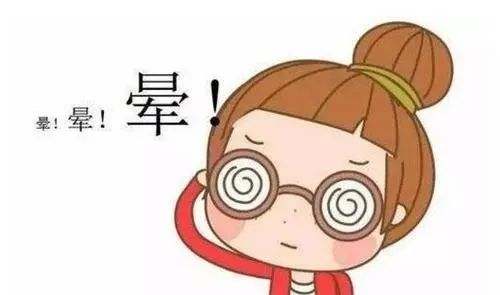

Throughout history, most physicians have treated dizziness based on wind, phlegm, blood stasis, and deficiency, particularly emphasizing phlegm-dampness.
TCM holds that the Spleen and Stomach are the foundation of postnatal health. If the Spleen and Stomach are weak, they fail to transform and transport, leading to internal phlegm and dampness, which obstructs the Spleen and Stomach, resulting in dizziness. The saying by Zhu Danxi, “No phlegm, no dizziness,” supports this view.
Master Zhang has clinically observed that Poria is indeed effective in treating dizziness, and even when used alone, it has therapeutic effects. In clinical practice, for any patient experiencing dizziness, regardless of blood pressure levels, Poria can be administered, especially for neurogenic dizziness, where it is most effective. Generally, symptoms resolve within 10 doses.
Case Study
In 1992, Master Zhang diagnosed a patient who felt heavy in the body and light in the head, experiencing dizziness and visual disturbances multiple times a day, with a white tongue coating and a wiry pulse.
The hospital diagnosed it as neurogenic dizziness, and after over a hundred days of treatment with no results, the patient sought Master Zhang’s help.
Initially, he prescribed the Ling Gui Zhu Gan Decoction for 15 doses, but it was ineffective, so he switched to 30g of Poria, adding 6g of Pinellia, 10g of calcined Dragon Bone (Long Gu), and 10g of calcined Oyster Shell (Mu Li), emphasizing Poria as the main herb.
He instructed the patient to take it for 10 days, leading to significant symptom relief, and after a month of consolidation, the patient reported complete recovery, confirming the effectiveness of Poria in treating dizziness.
Master Zhang believes that for phlegm and fluid disturbances causing dizziness, including Meniere’s disease, insufficient cerebral blood flow, and neurogenic dizziness, Poria should be the primary herb, with a dosage of 30g, surpassing even the “divine herb” Gastrodia in efficacy.
3.
Treatment of Palpitations
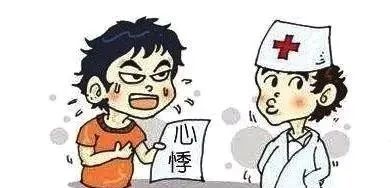

The “Shang Han Ming Lun: Palpitations” states: “If there is stagnant fluid, it is due to water stagnating under the heart, which is fire and dislikes water. When water stagnates internally, the heart becomes unsettled, leading to palpitations.” This indicates that palpitations are related to internal fluid stagnation, often associated with Spleen, Stomach, and Kidney Yang deficiency.
Therefore, warming Yang and transforming fluids should be the treatment principle for this condition, aligning with Zhang Zhongjing’s principle that “for phlegm and fluid conditions, warming herbs should be used to harmonize them.”
Master Zhang particularly emphasizes the role of Poria in treating palpitations, having established a small formula called the “Calming Palpitations Decoction,” which includes Poria, Longan, Biota Seed (Bai Zi Ren), calcined Dragon Bone, Polygala, and Licorice,
indicated for conditions such as neurasthenia, atrial fibrillation, tachycardia, and AV block.
If severe cases lead to heart failure, he adds 30g of Perilla Seed (Ting Li Zi) and 10g of Ginseng (Ren Shen).
In addition to the aforementioned Calming Palpitations Decoction, Master Zhang often combines Poria with Sour Jujube Seed, Longan, Licorice, and Cinnamon Twig for effective results.
Case Study
In 1982, Master Zhang diagnosed a patient with frequent tachycardia, accompanied by dizziness, fatigue, nausea, and insomnia with vivid dreams, presenting with a weak pulse.
He prescribed the Calming Palpitations Decoction, totaling 30g of Poria, 30g of Longan, 10g of Biota Seed, 30g of calcined Dragon Bone, 15g of Polygala, and 9g of Licorice,
to be taken in three doses daily for 15 days. After one course, the patient’s symptoms significantly improved, and he advised a second course, after which the patient reported complete recovery, confirming the remarkable efficacy of the treatment.
4.
Treatment of Hysteria
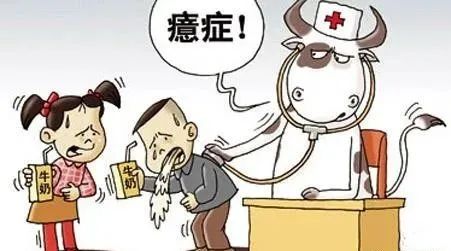
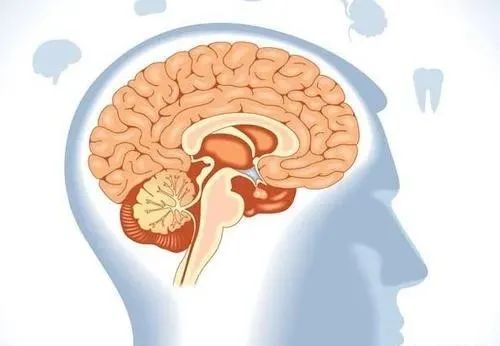
Hysteria falls under the TCM categories of “organ disturbance,” “depression syndrome,” “running piglet qi,” “plum pit qi,” “qi obstruction,” and “sudden deafness,” with its etiology primarily related to emotional distress, organ Qi stagnation, disordered Qi dynamics, Yin-Yang imbalance, and loss of heart governance.
Poria can open the chest, regulate organ Qi, nourish Yin, and protect the spirit, thus playing an important role in treating hysteria.
Master Zhang categorizes hysteria into two types: static and agitated.
The static type often presents with difficulty sleeping at night, a tendency to cry, confusion, phlegm expectoration, occasional coughing, a blank expression, lack of focus, and laziness in work. In clinical treatment, Master Zhang often prescribes 30-50g of Poria, combined with 15g of Lily Bulb (Bai He), 10g of calcined Dragon Bone, 10g of calcined Oyster Shell, 10g of Polygala (Yuan Zhi), and 60g of Floating Wheat (Fu Xiao Mai),
to be taken in three doses daily for 15-30 days, resulting in significant improvement.
The agitated type of hysteria often manifests as frequent hysterical outbursts, crying without cause, shouting, sudden rigidity, and abnormal behavior.
For this condition, Master Zhang often prescribes 60g of Poria, 30g of Licorice, 60g of Wheat, 20 dates (Da Zao), 1g of Scorpion (Quan), and 30g of Stone Calamine (Shi Jue Ming).
To be taken in three doses daily until recovery, this approach has proven effective.
The Licorice, Wheat, and Date Decoction is a calming formula from the “Jin Gui Yao Lue,” commonly used to treat organ disturbance, hysteria, menopausal syndrome, and neurasthenia. Master Zhang often adds Poria to this formula for enhanced efficacy.
Case Study
In 1955, Master Zhang diagnosed a primary school teacher with conversion disorder, presenting with normal menstruation, spontaneous crying, tinnitus, paranoia, nocturnal speech, and occasional convulsions or paralysis, with a calm pulse and no special phenomena.
After frequent episodes for over a year, the patient had received various treatments with no effect.
Master Zhang deduced that the condition was due to liver Qi stagnation and internal heat disturbance, prescribing the Licorice, Wheat, and Date Decoction with Poria for nourishment and calming effects.
He prescribed 45g of Poria, 30g of Licorice, 60g of Floating Wheat, and 30 dates,
to be taken in three doses daily for 10 days. The patient’s condition stabilized, and after a month of consolidation, the patient reported complete recovery, with no recurrence.
5.
Treatment of Phlegm-Cough

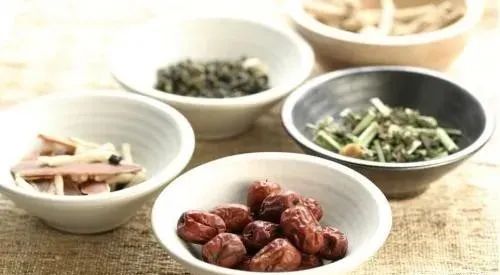
The lungs govern Qi and are the storage organ for phlegm; the Spleen governs transformation and is the source of phlegm; the Kidneys govern water and are the root of Qi.
When the Qi dynamics of the lungs, Spleen, and Kidneys are disrupted, phlegm and fluid obstruction in the lungs become the primary mechanism for cough due to phlegm retention.
In clinical practice, Master Zhang treats phlegm-cough by
prescribing the Ling Gui Wei Gan Decoction (ingredients: Poria, Cinnamon Twig, Schisandra, Licorice), removing Cinnamon Twig for patients with chest fullness, adding Dried Ginger and Asarum for those with vomiting, and adding Apricot Kernel for those with swelling. For patients with heat rising to the head and face, he adds Rhubarb.
He also prescribes the “Shang Han Lun” Xiao Qing Long Decoction for patients with external wind-cold and chronic cough, which has shown excellent results.
Both formulas feature Poria as the main herb,with a typical dosage of 30-60g to achieve effectiveness.
Case Study
In 1978, Master Zhang diagnosed an elderly woman, around 70 years old, who coughed up a cup of phlegm daily, experienced shortness of breath, and had persistent cough day and night, with sweating on the forehead, reduced urine output, and slight limb edema, presenting with a slippery white tongue coating and a floating pulse.
He prescribed the Xiao Qing Long Decoction with modifications, totaling 30g of Poria, 10g of Cinnamon Twig, 10g of Dried Ginger, 10g of Asarum, 15g of Schisandra, 10g of Pinellia, 10g of Apricot Kernel, and 10g of Licorice.
To be taken in three doses daily for 3 days, the patient showed some improvement, but it was insufficient. Master Zhang then increased the dosage of Poria to 60g, continuing treatment without interruption for a total of 9 doses, after which the symptoms resolved. He emphasized the importance of highlighting the dosage of Poria; otherwise, the treatment may fail.
Additionally, influenced by the cold damage school, Master Zhang often uses Poria and Alisma Decoction with Ting Li Zi to promote urination and clear phlegm in cases of chronic bronchitis and bronchiectasis, where cough is mild but phlegm is abundant, as described in the “Jin Gui Yao Lue” as fluid conditions.
The formula typically includes 30g of Poria, 15g of Atractylodes, 15g of Alisma, 10g of Cinnamon Twig, 20g of Ting Li Zi, 3g of Licorice, and 10 slices of Ginger.
To be taken in three doses daily for 7-15 days, this approach has shown significant therapeutic effects, outperforming the Xiao Ban Xia and Poria Decoction.

Master Zhang Zhiyuan, a renowned TCM expert, has widely applied Poria in clinical practice, consistently emphasizing its effects of “promoting urination, eliminating dampness, and calming the mind,” while adapting its use to various conditions.
In the application of Poria, large dosages are also a significant characteristic, typically exceeding 30g, and in herbal combinations, Poria is often highlighted as the main herb.
Master Zhang skillfully adapts ancient formulas for modern use, providing valuable experience for clinical treatment and herbal application.
Single Herb Poria: Treating Various Skin Diseases

Image: Master Xuan Guowei, a renowned TCM expert
Poria, also known as “Tu Bi Xie” or “Grass Yu Yu Liang,” has a sweet and bland taste, neutral nature, and is known for its ability to clear heat, eliminate dampness, detoxify, and open the channels. It was first recorded in the Ming Dynasty’s “Wai Ke Fa Hui” for treating Yangmei sores (syphilis).
Master Xuan Guowei is a renowned expert in TCM dermatology, with over 50 years of clinical, teaching, and research experience in TCM skin diseases, earning the title of “Master of Dermatology in Lingnan.”
In clinical practice, Master Xuan has applied Poria to treat various dermatological diseases, accumulating rich experience..
Today, we share his experiences for clinical reference and learning.
Psoriasis
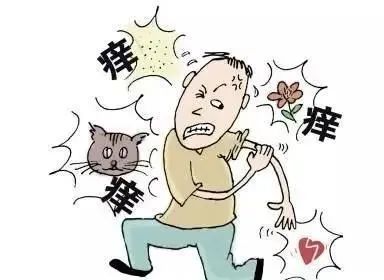
Psoriasis, known in TCM as “Bai Bi,” is a type of erythematous and papular scaly skin disease.
The “Yi Zong Jin Jian” states: “The shape of Bai Bi resembles that of rashes and scabs, white in color and often itchy, caused by wind evil invading the skin, and also due to blood dryness that fails to nourish the exterior.”
Clinically, common psoriasis presents as well-defined erythema covered with thick silvery scales, with varying degrees of itching, and in some cases, can present as arthritic or pustular types.
Psoriasis is an immune-mediated, multi-gene hereditary disease, with specific causes still unclear. Factors such as infections, medications, alcohol consumption, and smoking can trigger it.
Master Xuan has observed that psoriasis patients in Lingnan often experience exacerbation in autumn and winter, with improvement in spring and summer. He believes this condition is caused by the combination of internal and external evils, as the skin is superficial and easily invaded by wind and dryness, coupled with the patient’s deficiency of Qi and blood, leading to chronic dryness, heat generation, and toxin accumulation.
Master Xuan believes that treatment for psoriasis should focus on nourishing blood, moistening dryness, cooling blood, detoxifying, and promoting circulation. He often uses a self-formulated detoxifying skin soup (ingredients: Poria, Black Plum (Wu Mei), Purple Grass (Zi Cao), Curcuma (E Zhu), Red Peony (Chi Shao), Rehmannia (Sheng Di Huang), Angelica (Dang Gui), and Stone Calamine (Shi Shang Bai) with modifications.
In this formula, Poria clears heat and detoxifies,
Black Plum nourishes Yin and detoxifies,
Purple Grass cools blood and detoxifies,
Curcuma dispels stasis and detoxifies,
these four herbs work together to achieve detoxification and expulsion of evils, which is the core application of Master Xuan’s detoxification method for treating skin diseases.
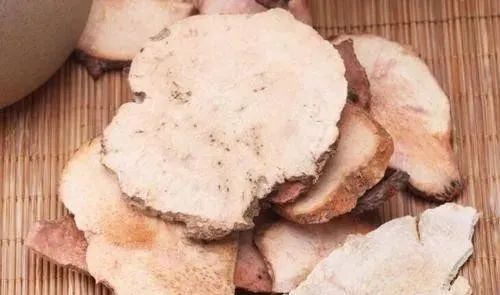
At the same time, Master Xuan emphasizes that “In TCM, harmony is paramount”, and the detoxification method is a summary of his approach to external factors.
The “Bencao Zhengyi” states: “Poria promotes urination and clears heat, and can enter the channels.” The channels are the superficial branches of the meridians, and the floating channels are particularly superficial.
Thus, Poria can eliminate heat and toxins from the skin surface. For patients with severe heat and toxins, Master Xuan often uses Poria in doses of up to 20g, combined with other herbs like Sophora (Bai Xian Pi) and Artemisia (Mian Yin Chen) for heat clearing and detoxification.
Master Xuan has also developed a Guangdong Provincial Hospital preparation called Psoriasis Ling Tablets (ingredients: Poria, Black Plum, Purple Grass, Curcuma, Rehmannia, Angelica, Red Peony, Chuanxiong, and Jin Su Lan), which has shown definite efficacy for blood deficiency and wind dryness-type psoriasis.

Allergic Purpura
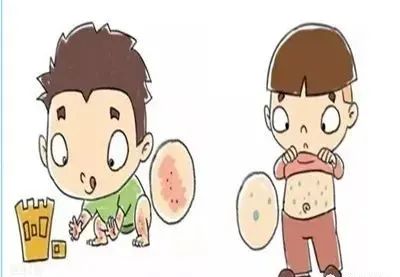
Allergic purpura falls under the TCM category of “Grape Epidemic.”
The “Ancient and Modern Medical Compendium” states: “Purpura often appears on the limbs or body, or as purple bumps resembling red bean boils.” Initial skin lesions present as scattered petechiae and purpura that do not blanch upon pressure, symmetrically appearing in clusters, which may later merge into patches, often accompanied by joint pain, abdominal pain, blood in stool, and hematuria.
Allergic purpura often follows upper respiratory infections and may be related to diet or medications, primarily caused by IgA-mediated immune complex deposition in small blood vessel walls, leading to vascular damage and inflammatory responses.
Master Xuan believes this condition is often due to insufficient congenital endowment, heat toxins invading the body, and wind-heat colliding, disturbing the blood vessels, causing blood to leak out of the vessels and manifest as purpura, with internal leakage leading to kidney damage and hematuria, and internal pressure on the intestines causing blood in stool.
Prolonged heat toxin accumulation can lead to poor blood circulation, depleting Qi and blood, resulting in Qi deficiency and blood stasis.
Master Xuan often uses the Vasculitis Decoction (ingredients: Poria, Xianhecao, Peony Root, Black Hellebore, White Grass Root, and Madder Root) as a base formula with modifications for treatment.
In this formula, Poria serves as the monarch herb, promoting dampness and heat elimination and detoxification,
while Xianhecao stops bleeding and tonifies deficiency,
Peony Root cools blood and promotes circulation,
Black Hellebore, White Grass Root, and Madder Root cool blood and stop bleeding,
together achieving the effects of clearing heat, detoxifying, and stopping bleeding.
Through years of clinical experience, Master Xuan has categorized allergic purpura patients in Lingnan into four common syndromes.
For those diagnosed with wind-heat damaging the Ying syndrome, he adds the Xiao Feng San to clear wind and heat; for those with damp-heat obstruction syndrome, he often adds the Si Miao Yong An Decoction to enhance damp-heat clearing; for those with Yin deficiency and excess fire, he often adds the Zhi Bai Di Huang Decoction to nourish Yin and clear heat; and for those with Spleen not governing blood syndrome, he often adds the Shen Ling Bai Zhu San to strengthen the Spleen and benefit Qi.
Master Xuan skillfully applies the Vasculitis Decoction, primarily using Poria, to treat various types of allergic purpura, achieving remarkable results.
In clinical practice, for early-stage allergic purpura without complications, Master Xuan often employs pure TCM treatment, yielding good results; for cases with joint pain, gastrointestinal bleeding, and other complications, he believes a combination of TCM and Western medicine should be adopted to quickly control the condition, shorten the course of the disease, reduce the occurrence of other complications, and improve the cure rate.

Acne
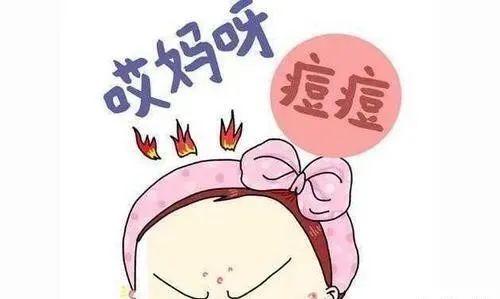
Acne, also known as “Lung Wind Pimples,” is a chronic inflammatory skin disease of the hair follicles and sebaceous glands, clinically presenting as various types of lesions on the face and back, including comedones, pustules, papules, nodules, and cysts.
Acne is a multi-factorial disease, with primary factors including increased androgens and sebum secretion, abnormal keratinization of hair follicle sebaceous gland ducts, proliferation of Propionibacterium acnes, and subsequent inflammatory responses.
Acne can negatively impact personal image, self-esteem, and lead to anxiety and depression, severely affecting mental health and quality of life.
Master Xuan believes the root cause of this disease lies indeficiency of Kidney Yin, imbalance of Yin and Yang in the Kidneys, and excessive fire disturbance,and in clinical practice, he often treats it by nourishing the Kidneys, draining fire, and cooling blood.
Due to the warm and humid climate in Lingnan, damp heat can easily accumulate, leading to oily skin and the presence of papules or pustules on the face and back, with a red tongue and thick greasy coating, and loose, sticky stools, indicating damp heat rising to the face and toxin accumulation. This understanding aligns with the ancient text “Suwen: On the Vitality of Heaven,” which states, “Sweating leads to dampness, which causes acne.”�
Epidemiological studies show that blood heat and dampness are the primary pathogenic mechanisms for acne in Lingnan, with the predominant syndrome being damp-heat accumulation.
For these patients, Master Xuan often uses Poria in large doses, combined with the Clear Acne Decoction (ingredients: Poria, Anemarrhena, Huangbai, Ligustrum, Rehmannia, Dandelion, and Salvia) for treatment.
In this formula, Poria clears damp heat, promotes urination and detoxification, while the Clear Acne Decoction nourishes the Kidneys, drains fire, and invigorates blood circulation, representing a comprehensive application of Master Xuan’s detoxification and kidney-nourishing methods for treating skin diseases.
The “Bencao Tujing” states that Poria has the effect of “treating sore toxins,” where sores are superficial skin lesions such as papules and vesicles, or those that rot after breaking, representing the manifestation of toxins accumulating in the skin. Acne lesions fall under the category of sore toxins, and for such diseases, Poria has excellent efficacy both internally and externally.

Other Skin Diseases
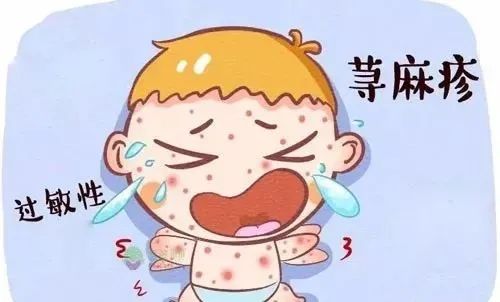
For other skin diseases, Master Xuan also frequently uses Poria for treatment.
For example, in cases of papular urticaria, Master Xuan often treats it by dispersing wind, clearing heat, and eliminating dampness and toxins, using a self-formulated Honeysuckle and Rehmannia Detoxifying Soup (ingredients: Honeysuckle, Rehmannia, Poria, Perilla, Xuchangqing, and Cicada Slough) for treatment.
In this formula, Honeysuckle, Rehmannia, and Poria serve as the monarch herbs, with Perilla and Xuchangqing as ministers, achieving the effects of clearing heat, eliminating dampness, and detoxifying, while also using Windbreaker and Cicada Slough to expel external evils, ensuring the removal of pathogens and stabilization of the body.
Poria promotes urination and detoxification, as stated in the “Bencao Zhengyi”;
Perilla dispels wind and detoxifies, as noted in the “Bencao Chengya Banji”;
These two herbs form a pair, promoting upward dispersal and downward drainage, achieving the effects of expelling wind and eliminating dampness, thus harmonizing Yin and Yang, which reflects Master Xuan’s method of balancing Yin and Yang in treating skin diseases.
The “Bencao Fengyuan” states that Poria is effective for Yangmei sores. The occurrence of syphilis is related to obscene epidemic toxins, and broadly speaking, Poria has therapeutic effects on various sexually transmitted diseases.
In the treatment of syphilis and genital herpes, Master Xuan particularly emphasizes dietary adjustments, often advising patients to use Poria in soups with soft-shelled turtle for nourishment.
Since the Ming Dynasty, physician Xue Ji has used Poria as the monarch herb in formulas to treat Yangmei sores (syphilis), and he believed that “if the condition is chronic, or if the patient has taken aggressive medications that harm the Spleen and Stomach Qi and blood, this herb can be used as the main ingredient, along with other herbs for accompanying symptoms,” indicating that Poria does not harm the Spleen and Stomach.

The skin is superficial and easily invaded by external evils. When damp-heat evil invades the surface, it accumulates as toxins, obstructing the flow of Qi and blood, leading to Qi deficiency and blood stasis over time.
Master Xuan often treats many chronic and difficult skin diseases, regardless of whether they are caused by internal or external factors, primarily focusing on detoxification.
Poria clears dampness and heat, promotes urination and detoxification, making it an excellent remedy for treating such diseases.
In clinical practice, Master Xuan has greatly expanded the application of Poria by combining it with other herbs, effectively treating various skin diseases with remarkable results. This not only demonstrates the flexible application of Master Xuan’s detoxification method but also reflects his comprehensive approach to nourishing the kidneys and harmonizing Yin and Yang in treatment.
After reviewing Master Xuan’s experiences with Poria in treating skin diseases, do you have a newfound appreciation for this herb?

